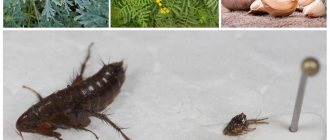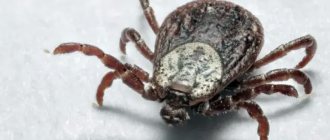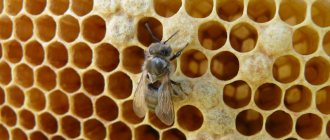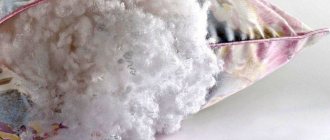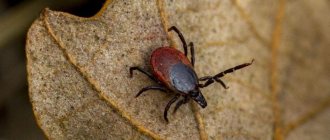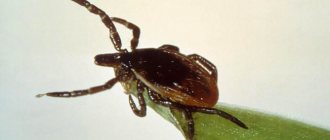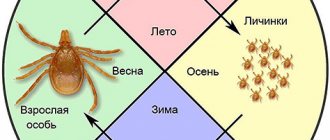A tick is not as dangerous as what it carries
There have always been ticks in the Rostov region. They have attached themselves to animals and humans before - ask the old-timers. Another thing is that before there were not such quantities, which is explained, among other things, by the massive treatment of fields and forest belts with pesticides. In addition, at that time among ticks there were few carriers of diseases dangerous to human life - tick-borne encephalitis, borreliosis (Lyme disease), Crimean hemorrhagic fever and others. Now, according to some data, at least a third of the tick population are carriers of infections.
The Rostov region is not endemic for tick-borne encephalitis, but borreliosis and Crimean hemorrhagic fever are much more common here, especially CCHF.
We talk about the danger of infection with specialists from the branch of the Federal Budgetary Healthcare Institution “TsGiE in the Republic of Rostov-on-Don” in Rostov-on-Don.
— How dangerous are ticks in the Rostov region?
— The Center for Hygiene and Epidemiology reminds that the Rostov region remains an area unfavorable for the incidence of Crimean hemorrhagic fever (CHF), and warns about the danger of infection with the CCHF virus in the spring-summer period (April-August) when traveling to garden plots, country cottages, groves, forest parks, when picking flowers, berries, visiting city parks, public gardens, as well as at home when in contact with pets.
— What is CCHF and how does infection occur?
— Crimean hemorrhagic fever is a severe natural focal infectious disease that is transmitted through the bites of ixodid ticks infected with the virus.
Human infection occurs when ticks are sucked on, when they are crushed by unprotected hands, when they come into contact with the blood of sick people (stopping bleeding, intravenous injections), when skinning and cutting up the carcasses of hares, slaughtering and butchering cattle. When attacking a person, ticks stick to the skin. Their bites are painless. The incubation period ranges from one to fourteen days. The disease is characterized by an acute onset, accompanied by high fever, pain in muscles, joints, nausea, vomiting, often accompanied by a rash and bleeding from internal organs.
— So, CCHF is life-threatening?
— If a person is not treated promptly, CCHF disease can be fatal, so if you are bitten by ticks, you must immediately contact a medical facility.
— How to protect yourself from tick bites?
— To prevent tick bites and protect against CCHF, you must follow the following rules of conduct in areas where ticks may live:
- wear clothes with long sleeves;
— use deterrents (repellents);
- conduct self- and mutual examinations, paying attention to the ears, scalp, armpits and other parts of the body;
- carefully examine pets;
- do not sit on tree stumps or lie down on the grass;
- Do not bring freshly picked flowers into the room.
— If you do find a tick, what should you do with it?
— It is not advisable to remove ticks yourself! If necessary, remove them using medical gloves or covering the tick with thin polyethylene and very carefully so as not to crush or tear off the proboscis. You need to take the tick with your thumb and forefinger, easily turning it left and right, and pull it out; treat the wound with iodine, and place the tick in a glass bottle and deliver it to the epidemiological department of the branch of the Federal Budgetary Healthcare Institution “Center for Hygiene and Epidemiology in the Rostov Region” in the city of Rostov-on-Don (Larina St., 10), to determine the species.
In the laboratory of especially dangerous infections of the Federal Budgetary Institution of Health "Center for Hygiene and Epidemiology in the Rostov Region" at the address: Rostov-on-Don, 7-liniya st., 67 (on weekdays from 9:00 to 16:40), tick studies are carried out, taken from a person for tick infection with CCHF and other tick-borne infections.
— Is it possible to treat yourself for CCHF? Are there medical preventatives or cures?
— All people bitten by ticks must go to medical institutions at their place of residence for medical observation.
Don't self-medicate!
If you have a fever, chills, headache, or lower back pain, be sure to consult a doctor; do not forget to tell the doctor about a tick bite or crush. This will help save your life!
Prepared
Svetlana Kuprina
When do ticks appear?
In May, tick larvae emerge and join the adults to make it the hottest month of the year. According to the Centers for Disease Control and Prevention, May through August is typically the peak season for contracting Lyme disease. Tick behavior patterns can also vary depending on where you live and what types of ticks live in your area. For example, Gulf Coast ticks, which can be found along the Gulf and southern Baltic coasts, as well as in the Rostov and Smolensk regions, can become active as early as February. Pacific Coast ticks (located primarily in the Far Eastern region) are active throughout the winter. Your local health department can be a good source of information about the ticks most active in your area. There are approximately 1,000 unique species of ticks worldwide, and they are found everywhere. Depending on where you live, ticks can be a pest at any time of year. Tick season, however, usually begins when the weather warms and dormant ticks begin searching for food - in late March and April in most places in Russia. Tick season usually ends when temperatures begin to drop below freezing in the fall. In some temperate climates, such as California, ticks are active year-round.
Anti-tick products
Ticks don't usually infest the inside of your home, but if they manage to latch on to you or your pets, they can become entangled and hide inside. Ticks can hide anywhere once inside, so if you find one in your home, it's time to put the vacuum away. The easiest way to get rid of individual mites is to vacuum pet bedding, cracks in the floor, and under furniture. Be sure to discard the vacuum bag immediately after cleaning. Ticks found on linen, bedding or clothing can be killed in the dryer. However, do not wash them first as the washing temperature may have different effects. For example, researchers from several universities as well as the Centers for Disease Control and Prevention (CDC) have found that black-legged ticks can sometimes survive being submerged in water. However, when dried warmly according to the manufacturer's instructions, they quickly dehydrate and die. Once everything is clean and tidy, natural tick repellents such as an essential oil blend can help get rid of ticks. Examples may include blends of lemongrass, peppermint, and garlic oil. However, it should be noted that essential oils are only evaluated by the Environmental Protection Agency for their safety, not their effectiveness.
Correct algorithm
The owner of a dog that has been bitten by an encephalitis tick needs to act correctly and as quickly as possible. If you do nothing or start an infection in the future, this will lead to the appearance of a serious illness in the animal, which will be impossible to cope with even with proper treatment.
Today, professional veterinarians work in Moscow and Rostov who can quickly identify the disease and treat your pet. Don't put off visiting the veterinarian until later. As soon as the owner notices that his dog has been bitten by a tick or characteristic symptoms have appeared, it is necessary to immediately take the animal to the doctor. Otherwise, the consequences could be dire.
Treatment of a dog after a tick bite should in no case be done independently . Only an experienced veterinarian will be able to understand the dog’s problems, correctly identify the specific type of disease and prescribe appropriate medications. It is because of the wrong choice of treatment by the owners themselves that dogs often die when infected with tick-borne encephalitis. If the pet’s condition is extremely weak and critical, the dog is left in the hospital, a medicine is injected with a dropper and the animal is monitored around the clock.
You can remove a tick from the animal’s body yourself, and you should act carefully, without tearing off the head or throwing away such a bloodsucker. Today, some veterinary clinics even offer the opportunity to check ticks for encephalitis and other dangerous diseases. To loosen an insect that has burrowed into an animal’s body, you need to drop a special agent called “Amitrazine” on it; you can also use regular sunflower oil. After such treatment, you should carefully brush off the tick or remove it with tweezers, making characteristic twisting movements.
After removing the tick, the wound should be treated with brilliant green and the pet should be shown to the veterinarian . At the same time, you need to remember that it is not recommended to walk the dog in the coming days, closely monitoring the dog’s condition. If, due to the owner’s oversight, the dog has eaten a tick, then they urgently contact a veterinarian, where they perform gastric lavage.
Treatment of a sick dog involves not only injections of antibiotics or appropriate medications, but also a proper diet that will completely restore the animal’s body. Proper nutrition consists of light foods without heavy animal fats. The animal must be fed strictly on a schedule and only with fresh food.
Veterinarians also advise giving your dog fresh rosehip decoction, which is prepared without sugar and perfectly removes toxins from the body. During the treatment period and during recovery, which usually lasts for one and a half to two months, a gentle walking regimen is prescribed; training, competitions and hunting are also excluded. Any stress on the body of a recovering dog should be minimal.
The best means to combat ticks on the site
One of the institute's suggestions is to place tick tubes around your property to turn these birds and rodents into tick killers rather than hosts. The best times to use them are July and August, when the tick larvae have hatched and are waiting for a blood meal, and in the spring, when the second stage ticks, known as nymphs, emerge. Tubes are especially good for mice that collect nesting material. An open-ended cardboard tube filled with cotton, ideal for nesting, is treated with the pesticide permethrin. When mice bring cotton back to their nests, permethrin binds to the oil in their fur. The ticks are then killed when they try to attach themselves to the mice, which are not harmed.
Ways to combat ticks
Modify your landscaping to create tick-safe areas. Steps like these can also help reduce other types of ticks in and around your yard. Remove fallen leaves and tall grass and brush regularly around the house. Place wood chips or gravel between lawns and wooded areas to keep ticks out of seating areas. Keep playgrounds and play equipment away from bushes, bushes and other plants. Consider using a chemical control. Mite control chemicals are effective for homeowners or can be applied by a professional pest control expert. Dissuade the deer. Remove deer-attracting plants and create physical barriers to help keep deer from entering your yard and bringing black-legged ticks with them.
Measures to take before leaving home
Know where the ticks are! Ticks can be found in a variety of places, but it is usually safe to assume that ticks are present on any tall grass, low-growing bushes, or forest plants. Ticks can even be found in your backyard. If you're walking through ankle-length grass, it's safe to assume that you could potentially be carrying a tick. Think about the walk you are going to take and plan accordingly.
Cover as much as possible Limit the amount of exposed skin! A tick cannot bite you unless it finds something to bite. Wear closed-toe shoes, ankle-length socks, and long pants. Tucking your pant legs into your socks can be one of the most effective and easiest ways to prevent the transmission of infection.
Symptoms of the disease.
Not all ticks are carriers of dangerous diseases, but you need to know what manifestations require immediate contact with a veterinarian.
After the parasite gets into the dog’s blood from the tick’s saliva, about a week should pass before the first signs of the disease appear. Most often, the first thing the owner notices is a refusal to eat and excessive thirst. These symptoms begin to develop due to a rise in temperature, which can reach 400 and above. These are the first signs when you need to urgently contact a veterinarian. The animal then produces urine that is bright yellow in color, and then it darkens to the color of dark beer. This occurs due to the destruction of red blood cells in which the parasite lives and multiplies. Hemoglobin enters the blood and is excreted by the kidneys. Because of this, the kidneys and their function suffer greatly. After a few days, the animal develops yellowness of the mucous membranes. The more obvious the signs, the more severe the pet’s condition and the more difficult it is to cure. If you do not consult a veterinarian in time, the animal may develop kidney failure and the animal may die, despite treatment. Therefore, the sooner the owner contacts a veterinary clinic for a diagnosis and adequate treatment, the easier it will be to cure the pet.
Pros and cons of acaricides
Ticks are important vectors of a wide range of pathogenic organisms. In the Netherlands, Ixodes ricinus is the most common tick species and the main vector of some Borrelia species, the species that can cause Lyme borreliosis. Many chemicals have been developed to control ticks. This chapter discusses several commonly used acaricides, the primary purpose of which is to evaluate whether they can be sufficiently effective and environmentally friendly for tick control in the field by application to large mammals. This method is currently still in the experimental stage and has only limited use. The focus was on amitraz, permethrin, flumethrin, deltamethrin and ivermectin. After qualitatively comparing the pros and cons, it was concluded that the pyrethroids flumethrin and deltamethrin are potentially the most beneficial, despite their high toxicity to various other animals in the environment. Both compounds act as contact acaricides and are not easily washed out from the human environment. Consequently, the risk to the environment can be minimized if they are used correctly and thoughtfully, and pollution of the aquatic environment is prevented. However, all synthetic acaricides have a number of serious disadvantages, and when considering their use in the field, it is always necessary to weigh the benefits against any associated costs. More environmentally friendly alternatives are being developed, of which tick vaccines appear to be the most promising.
Where do ticks live?
Ticks typically live in moist, shady areas and generally avoid dry, sunny areas. Simply put, they sometimes “hide”, preferring tall grasses and bushes. Along retaining walls and fences are also good places to look for ticks. When it comes to protecting yourself from ticks and tick-borne diseases, you can take the following steps to reduce the impact of ticks on your property: Keep the grass short. Ticks love long grass, so keeping it short will cause ticks to scavenge from open areas of grass on your property. Clean up litter and debris from your yard. Instead of piling up those large branches and sticks, take them to the landfill. * * * Grass clippings, leaves and other yard debris are ideal hiding places for ticks. Create a barrier around areas where you know ticks are present. Ticks love to hide, so create a "barrier" around fences, compost piles, etc. For example, place a perimeter gravel pile around the compost pile to keep ticks away from your outdoor living areas.
